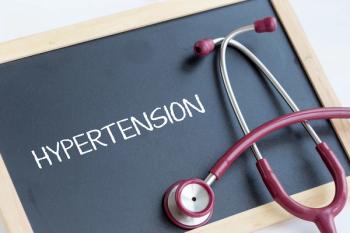
ADA's Cefalu Calls for Transparency Across Supply Chain to Address Insulin Costs
In testimony before a Senate committee, the chief scientific and medical officer said no single stakeholder is at fault, but the entire system of insulin delivery must be examined to make things better for consumers.
The top medical official with the American Diabetes Association (ADA) told a Senate committee Tuesday that transparency across the insulin supply chain is needed to crack the mystery of rising costs, which he said are harming consumers and keeping biomedical advances from reaching those who need them.
William T. Cefalu, MD, chief scientific, medical, and mission officer for ADA, presented findings from a working group that met with more than 20 stakeholders involved in the manufacture and distribution of insulin and published its findings Tuesday in Diabetes Care1; the journal also published its report that the costs of diabetes in the United States were $327 billion in 2017, a 26% jump from 2012.2 Cefalu told the Special Senate Committee on Aging that diabetes is now “the most expensive chronic illness in America,” as the updated total features $31 billion for medication, including $15 billion for insulin.
Insulin stands apart from other prescription drugs because the 1.2 million people with type 1 diabetes (T1D) need the hormone daily to stay alive. Of the 29 million with type 2 diabetes (T2D), approximately 1 in 3 people will eventually need it if they live long enough and their disease progresses, based on current trends. The ADA previously reported that insulin costs nearly tripled from 2002 to 2013, based on a widely cited
Cefalu’s testimony before the committee, chaired by longtime diabetes caucus co-chair Senator Susan Collins, R-Maine, comes as Capitol Hill awaits a speech from President Trump on tackling high prescription drug prices. There are signs that the administration’s program will take on rebates, the system of discounts among drug makers, pharmacy benefit managers (PBMs), and health plans that critics say work against consumers with high deductible plans or no insurance. The ADA white paper referred to these groups of patients as hard hit by rebates, but said the bigger problem is that no one knows precisely how they work.
“Manufacturers state that the need to provide a higher rebate to achieve preferred formulary positioning impacts the list price of insulin,” the white paper states. “However, manufacturers do not know where the dollars from increased rebates flow.”
A schematic of the supply chain, with winding arms akin to a map of a subway system, dominated the floor of the Senate hearing room. The visual showed all the points of negotiation among pharmacies, manufacturers, PBMs, wholesalers, and health plans—except there is no negotiating for the consumer.
“There’s a flow of money that we don’t quite understand,” Cefalu said, as he showed committee members the chart, and explained that none of the savings flow back to people who use insulin. “It’s the uninsured patient who has to pay the list price,” he said. “The most vulnerable patients are subsidizing the system.”
Collins said she was determined to “deconstruct that complicated web to figure out who is making how much money.”
One of those consumers appeared at Tuesday’s hearing. Paul Grant, one of Collins’ constituents from Gray-New Gloucester, Maine, told how he now buys insulin from Canada for his 13-year-old son, Solomon, after a price increase put the cost out of reach. He compared the $1489.46 he would pay Express Scripts—with insurance—with the $294.97 he can pay for a 90-day supply of Humalog friom Canada. Grant said the situation gives him little choice—even though buying the drug from Canada doesn’t count toward his deductible.
When asked later in the hearing by Collins’ diabetes caucus co-chair, Senator Jeanne Shaheen, D-New Hampshire, what message she should carry to HHS Secretary Alex Azar, the former president of Eli Lilly, which makes Humalog, Grant said he wanted to ask, “What is fair? What can we expect people to afford?”
Besides a lengthy discussion about the mystery surrounding rebates, committee members and witnesses seized upon the relative of competition in the insulin market—and the fact that no real “generic” market exists for a drug that is nearly 100 years old.
Jeremy A. Greene, MD, PhD, a professor of medicine and history of medicine at Johns Hopkins University, addressed the lack of generic competition in his testimony. The insulin analogues on the market today are vastly improved over the original animal-derived insulin discovered in 1923. But unlike other drug classes, as new drugs come out, older ones are not copied—they are simply withdrawn from the market. He said a colleague who runs a diabetes clinic in Baltimore polled patients and learned that 1 in 4—both T1D and T2D—acknowledged rationing insulin to not taking doses to due to cost. In his testimony, Greene said, “whether each incremental innovation is worth the price we pay, in a world where insulin remains unaffordable to many diabetics, is a more difficult question to answer.”
Cefalu said the pricing problem is frustrating because the advances in insulin do offer better control and less likelihood of hypoglycemia. He said Azar has expressed a desire to fix drug prices. “He understands the complexity of the problem, and the position of every stakeholder. It’s the system that needs to be fixed,” Cefalu said, not just a single stakeholder.
“Why are there rebates at all?” he asked.
Tuesday’s hearing comes more than a year after ADA launched its
Rising insulin prices prompted a putative
The insulin companies acknowledged in a March filing that “pharmaceutical pricing is an important issue, especially given how recent trends in the design of insurance benefits have affected certain patients’ out of pocket costs.”
Collins said she has heard from many patients who have skipped doses or rationed their insulin supply to deal with rising prices. “Far too many individuals and families are familiar with the devastating toll diabetes has taken on people of every age, race, and nationality,” she said. “The cost of a drug that is approaching its 100th birthday should not add to that burden.”
References
- Cefalu WT, Dawes DE, Gavlak G, et al. Insulin access and affordability working group: conclusions and recommendations [published online May 8, 2018]. Diabetes Care. 2018; dci180019. doi: https://doi.org/10.2337/dci18-0019.
- American Diabetes Association. Economic costs of diabetes in the United States, 2017. Diabetes Care; 2018;41(5):917-928. doi: https://doi.org/10.2337/dci18-0007.
- Hua X, Carvalso N, Tew M, Huang ES, Herman WH, Clarke P. Expenditures and prices of antihyperglycemic medications in the United States: 2002-2013. JAMA. 2016;315(13):1400-1402. doi: 10.1001/jama.2016.0126.
Newsletter
Stay ahead of policy, cost, and value—subscribe to AJMC for expert insights at the intersection of clinical care and health economics.














































